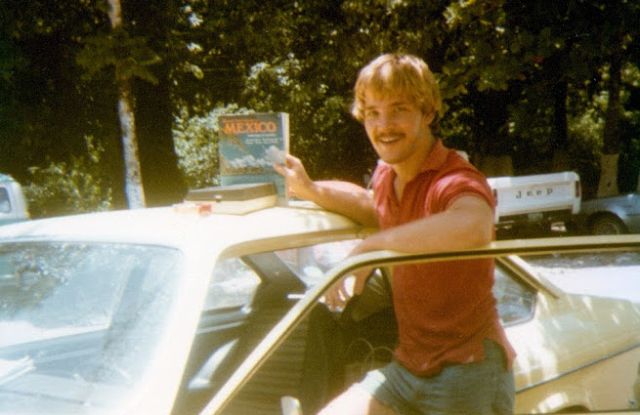The love bank – your key to close relationships

In my struggle to learn how to save marriages, I
eventually discovered that the best way to do it was to teach couples how to
fall in love with each other — and stay in love. So I created a concept that I
called the Love Bank to help couples understand how people fall in and out of
love. This concept, perhaps more than any other that I created, helped couples
realize that almost everything they did affected their love for each other
either positively or negatively. And that awareness set most of them on a
course of action that preserved their love and saved their marriages.Within each of us is a Love Bank that keeps track of the
way each person treats us. Everyone we know has an account and the things they
do either deposit or withdraw love units from their accounts. It’s your
emotions’ way of encouraging you to be with those who make you happy. When you
associate someone with good feelings, deposits are made into that person’s
account in your Love Bank. And when the Love Bank reaches a certain level of
deposits (the romantic love threshold), the feeling of love is triggered.As
long as your Love Bank balance remains above that threshold, you will
experience the feeling of love. But when it falls below that threshold, you
will lose that feeling. You will like anyone with a balance above zero, but you
will only be in love with someone whose balance is above the love threshold.However, your emotions do not simply encourage you to be
with those who make you happy — they also discourage you from being with those
who make you unhappy. Whenever you associate someone with bad feelings,
withdrawals are made in your Love Bank. And if you withdraw more than you
deposit, your Love Bank balance can fall below zero. When that happens the Love
Bank turns into the Hate Bank. You will dislike those with moderate negative
balances, but if the balance falls below the hate threshold, you will hate the
person.



ain’t be wantin no hate bank…love.
This is a great way of describing the “giving” aspect in a marraige. It is such a shame that many people close their account and go and find another “bank”! But they will soon find the same problem with their new “bank” if they still havent learnt to give!
Dearly Beloved Love Banks,
Please go to this website http://www.godslovebank.com and read this interesting New Self-Love Spiritual Growth Program And Curriculum called God’s Love Bank.
God’s Love Bank is a wholistic approach to spiritual growth and purposeful living! It provides a New Self-Love Spiritual Growth Program And Curriculum known for its emphasis on Sound Doctrine (healthy, wholesome, spiritual teaching). God’s Love Bank sets forth a love rationale called (Chesed) which is the Hebrew word for the steadfast love of the Lord. It asserts that God, out of an act of steadfast love (Chesed), create you and I as threefold spiritual beings who function and operate as His Love Banks on earth. Thus, the God’s Love Bank program and curriculum targets wholistic spiritual growth and purposeful daily living through your spirit, soul, and body. It claims that the best way to understand how to wisely invest with your spirit, soul, and body, as Jesus teaches in (Matthew.25:14-30;16:26; NIV), is to see yourself as God¡¯s Love Bank on earth. Your spirit is the inside teller of God’s Love Bank, your body is the outside teller, and your soul is the bank itself. Which ever is the stronger or wiser investor, your spirit or your body, will eventually take control of the bank of your soul and determine your purpose and destiny in life! (Galations6:7-8)
The great challenge is that we all have a bank robber of our souls called old self-love! Old self-love is the thief who comes to steal, kill, and destroy God’s purpose and blessings in our lives. It makes you do negative, self-defeating, self-sabotaging, self-destructive things to yourself, all with the sincere intent to love yourself. However, the Good News about your old self-love, is that it is a lie. You can actually invest in the bank of your soul in a way that allows you to put off your old self-love and put on new self-love. The God’s Love Bank program and curriculum is strategically designed to help you invest in the bank of your soul in a way that puts on new self-love. It helps you bring your spirit, your soul, and your body into harmony with God’s purpose for your daily life. New self purpose then becomes a daily lifestyle!
Interestingly enough, Jesus was the first person to demonstrate for us New Self-Purpose! He also was the first human being to use the banking metaphorin conjunction with the spirit, soul, and body, and to employ the God’s Love Bank concept in His own daily life and ministry. Thus, in the God’s Love Bank program and curriculum, Jesus is our life-model for spiritual investing in the bank of our souls, and for purposeful living in our daily lives! Please see (Matthew 25:14-30NIV,especially V. 27 NIV; and Luke19:23NIV, also see God’s Love Bank, book one, pages 1-17).
God’s Love Bank, Book One is the first book written by Dr. Tony Roach. In addition to being a religious best seller, it has evolved into a successful church program and curriculum used by churches throughout the United States and abroad. God’s Love Bank, has also become a very effective40-Day new self-purpose spiritual growth program. It helps people understand how their threefold being functions and operates as God¡¯s Love Bank on earth. Most importantly, it teaches people how to invest in the bank of their souls toward the fulfilling of God’s purpose in their lives. The God’s Love Bank(GLB) program and curriculum is theological, psychological, and therapeutic. GLB integrates seven different types of psychological and therapeutic approaches into one theological model. Structurally speaking, the GLB program and curriculum is a wholistic individual and family facilitation program. It is a new self-love framework for thinking, a new self-love curriculum for teaching, and a new self-purpose program for living!
As a Framework For Thinking the God¡¯s Love Bank program and curriculum helps you understand the poverty of your old self-love, so you can put it off and gain the prosperity of New Self-Love as Paul commanded in (Ephesians 4:22-24; NIV).As you learn more about the poverty of your soul as a result of old self-love, you will be able to grow into the prosperity of your soul through New Self-Love. New Self-Love is your renewed love for your original resurrected self, your higher self, your best self, your supreme self, in essence, your New Self. Thus, your New Self is the center and foundation of your New Self-Love!
As a Curriculum For Teaching the God¡¯s Love Bank program and curriculum provides you with fifteen core New Self-Love Values of the most successful human being who ever lived, Jesus Christ. The fifteen core values of Jesus are designed to empower you with New Self-Love. Therefore, to help you internalize the fifteen core values of Jesus into the bank of your soul, (referred to in the God¡¯s Love Bank program as New Self-Love Accounts), you are also given fifteen systematic New Self-Love Tools of Thinking that are easy to understand, fun to learn, and exciting to experience in your daily life.
As a Program For Living t he God¡¯s Love Bank program and curriculum helps you design the life of your dreams according to God¡¯s purpose; then, it shows you how to live in God’s purpose with passion, pleasure, and prosperity! It allows you to make daily love deposits and/or withdrawals in the bank of your soul as you grow through five stages of spiritual growth toward New Self-Purpose. The overriding objective is to grow through the Infancy Stage of spiritual growth into the Childhood Stage, into theYouth Stage, into the Adult Stage, and ultimately into the Purpose Stage! As you live in the purpose stage of spiritual growth, you restore God’s original purpose for your daily life called New Self-Purpose. New Self-Purpose, then, becomes the center of everything in your life and everything you do in life, answering vital questions such as, who am I, what am I, and, most importantly, what is my purpose in life?
I really enjoyed this blog, I was doing a little searching on your blog about relationships. Good blog Seth, helps explain quite a bit and makes even more questions come up in my mind.